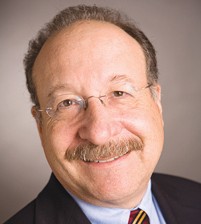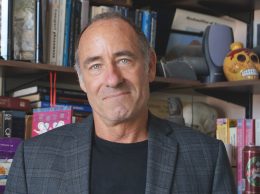
Henry Dubroff
If there is one word that marks the current resurgence of California’s economy, it is this: innovation.
During a road day on Sept. 9 that took me from the Reagan Presidential Library in Simi Valley to the new Deckers Outdoor Corp. headquarters in Goleta, the I-word was used at least a few dozen times. And perhaps fittingly it was the day when Apple CEO Tim Cook rolled out the firm’s newest products — larger phones, a smartwatch and digital payments system — to broad approval from those who follow the Silicon Valley giant.
Some of the innovation that’s going on in the Tri-Counties is not quite as flashy as Apple’s new watch, but it seemed clear from listening to Edison International CEO Ted Craver and Deckers Vice President Stuart Jenkins that California is once again in the process of reinventing itself.
Craver, who spoke at the Reagan Library to kick of California Lutheran University’s Corporate Leaders Breakfast Series, talked about a quiet revolution in electric-power distribution that’s taking place in response to the need to reduce carbon emissions and the demand that new digital devices are placing on the system.
The former chief financial officer, who still bears the bruises of the Enron era of deregulation, said the trick for giant utilities providers such as Edison is to navigate between reliability and environmental responsibility. That means driving down the costs of renewables and increasing efficiency. California’s power system is relatively inefficient because it peaks only in summer.
That also means a more flexible grid where power sources are located closer to the loads. Craver described a “plug-and-play” network that utilizes something called “dynamic dispatch” technology that can tell trash companies when bins are full or tell traffic lights to change when there are no cars present to improve traffic flow. “I hate sitting at red lights,” the Edison CEO confessed, adding that he expects “more change in the next 10 years than in the past 100 years” for the once staid utility business.
And Jenkins, who arrived at Deckers to lead the shoe company’s innovation efforts just a few years ago, described how the mid-sized owner of Ugg, Teva, Sanuk and other brands has tried to understand and compete against the ever-present disruptive rivals in the highly competitive fashion industry.
Sounding for a moment like a utility executive, he told the audience at the annual kickoff for Montecito Bank & Trust’s B2B series of programs that much of the innovation at Deckers is aimed at incremental improvements such as reducing the cost of trade show displays or cutting shipping and packaging costs.
Sustainability is also a key area of innovation, with newer, lightweight components replacing older materials in its flagship shoes, he said. The real disruptive innovations are new products such as its Hoka One One brand of running shoes that are beginning to revolutionize the market for sports — a category where Deckers Outdoor Corp. so far has not been a big competitor.
The key to innovation is having a corporate culture that embraces change, Jenkins said. True innovators are humble, perpetually optimistic, open to change and future-focused, he noted. “All of the good is going to happen in front of you,” he said. The biggest barrier is ingrained systems, he said adding, “there are antibodies everywhere.”
The key to innovation is to differentiate it from invention, said Jenkins, a native Nebraskan who failed 94 times before he persuaded athletic footwear pioneer Reebok to take a chance on a shoe filled with air pockets. Innovation is about driving revenue and turning ideas into dollars, he said.
Surprisingly, there’s even a bit of the disrupter in Craver, who talked about all of the fiber-optic cable that Edison has embedded in its service area as a potentially explosive source of revenue.
And he said Gov. Jerry Brown’s belief that carbon emissions are the biggest threat to humankind has made the governor one of the drivers of innovation in any number of fields. California’s Renewable Portfolios Standard mandates that by 2020, the state’s utilities will get one-third of their energy from renewable sources.
“The biggest risk is the failure to innovate,” said Jenkins. Those are powerful words for a time of great change.
• Contact Henry Dubroff at hdubroff@pacbiztimes.com






 Print
Print Email
Email

















